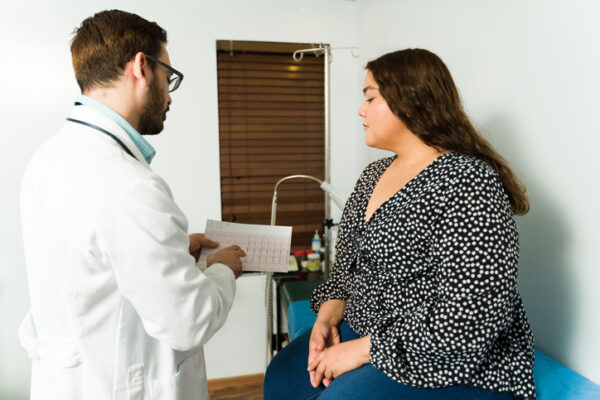
Recent estimates reveal that more than 1 billion people worldwide, including nearly 880 million adults and 159 million children, are living with obesity. It is a global health crisis that affects low- and middle-income countries as much as prosperous nations. Indeed, in low-/middle-income countries, it is common to find undernutrition and obesity co-existing not just within the same communities but within the same households. That is because many lower-cost foods are also lower in nutrient quality and higher in fat, sugar, and salt content, making them energy-dense. This is the so-called “double burden” of malnutrition.
It is crucial to understand that obesity is a serious health condition associated with increased risks of diabetes, heart disease, and other chronic illnesses. It is also heavily impacted by social determinants of health (SDOH). Therefore, it is not a simple disease to study or treat.
Treatments for obesity are continuing to develop, with more evidence-based programs for lifestyle modification, new pharmacotherapies, and robust data to support bariatric surgery. Despite these advances, however, there continues to be a substantial gap between the scientific evidence and the implementation of research into clinical practice for effective obesity management — something recently highlighted by the American Heart Association’s (AHA) scientific statement, “Implementation of Obesity Science into Clinical Practice.”
Fortunately, a lot of promising clinical research into obesity treatments is underway, including combinations of nutrient-stimulated hormone-based medications (dual- and tri-agonists). Glucagon-like peptide 1 (GLP-1) agonists are among the latest to seize headlines and widespread interest. Equally important, however, is the Improved knowledge of obesity’s multifactorial causes, including psycho-social factors and genetic variants.
Clinical connections encourage a multidisciplinary view
Lately, several organizations have released guidelines that promote more holistic, integrated, and inclusive approaches to obesity studies and management. For example:
- the AHA now encourages specialists to screen patients for comorbidities that are part of the cardiovascular-kidney-metabolic (CKM) syndrome. CKM considers the links between obesity, diabetes, chronic kidney disease (CKD), metabolism dysfunction–associated steatotic liver disease (MASLD), and cardiovascular disease (CVD).
- the American Diabetes Association (ADA) now recommends that endocrinologists screen patients with Type 2 diabetes for MASLD.
- the European Association for the Study of the Liver (EASL), European Association for the Study of Diabetes (EASD), and European Association for the Study of Obesity (EASO) have jointly published clinical practice guidelines for MASLD management.
- a volunteer North American/European task force that acknowledges the interrelated nature of obesity and other conditions has updated its practice recommendations for the multispecialty management of diabetes, cardiorenal, and/or metabolic (DCRM) diseases.
Increasingly, obesity-related studies are compelled to mirror these moves toward multidisciplinary, whole-person care by measuring parameters in addition to weight loss — such as a treatment’s effects on the heart, liver, kidneys, and cardiovascular system. Although weight loss may still be the primary endpoint for obesity-related clinical trials, more studies are also establishing secondary endpoints around CKM, MASLD/metabolic dysfunction-associated steatohepatitis (MASH), diabetes, sleep apnea, and other markers. Site selection is no longer primarily limited to endocrinology but includes sites focused on cardiovascular, renal, liver, and other conditions.
Patients see the value in studies that evaluate other clinical benefits alongside weight loss. All the same, to conduct meaningful research, we must be sure to view these studies through patients’ eyes. The patient perspective — in all its diversity — must be embedded into clinical trials from the very start.
Diversity demands more patient-centricity
The more we understand from the patient’s perspective what it is to be obese — what it is to deal with the stigma, the comorbidities, the economic impacts, and the psychosocial aspects of obesity — the better the likelihood of retaining patients in successful clinical trials.
As might be expected, the prevalence of obesity makes it relatively easy to enroll patients in obesity-related studies. The challenge lies in retaining patients in these studies. It is rather difficult for several reasons.
The first reason is that patients may not tolerate the medications, some of which have significant gastrointestinal side effects. In addition, patient expectations play a big role in retention. Often, patients grow frustrated if they believe they are not losing as much weight as they expected, as quickly as they expected. Patients may also dislike how frequently they need to visit their physician, or the standardized diet some studies require to minimize inter-site variability. Finally, with so many clinical trial options available, people may be enticed to leave one study in favor of another.
Despite all the challenges, obesity-related studies must be able to enroll and retain globally diverse and representative patient populations. To mitigate a high drop-out rate, patient/caregiver education is crucial. There is no one-size-fits-all answer, either. Every patient is unique. Therefore, gender, race, ethnicity, community, lifestyle, etc., all must be considered when crafting a retention plan.
In obesity clinical trials, it is instrumental to take a tiered approach to the global retention plan by customizing it for each country and then for each site. Within each site, the principal investigator (PI) should further customize the plan for each patient. Using tools that measure the likelihood a patient will stay in a given clinical trial and why they might drop out, PIs can try to mitigate potential patient concerns before they arise.
It’s always helpful for patients to feel connected to a study’s PI. Still, the importance is amplified in obesity-related trials because the social stigma associated with obesity may make patients reluctant to talk about their experiences. Compare, for example, cancer patients in a chemotherapy clinical trial and obese patients in a GLP-1 study. All may suffer the side effects of vomiting and diarrhea. Yet, with less stigma to contend with, the cancer patients are more likely to report them without qualms.
Simply put, patients in obesity clinical trials may be physically and emotionally uncomfortable. So, a rapport with the PI and site staff is vital for the success of the study. Enabling the same person to care for the patient throughout the entire study, from beginning to end, can go a long way toward keeping patients engaged.
Working with patient advocacy groups can also be beneficial, especially if they are involved early in the protocol development stage. Patient advocates can:
- Help sponsors determine whether the protocol’s proposals address patients’ main concerns and needs.
- Help improve study design by providing insights into the patient perspective and the likelihood that patients will adhere to all visits/procedures.
- Serve as a patient/caregiver support system by helping them to understand that they are not alone; they are part of a community of people with similar challenges.
- Educate families, caregivers, and friends about how to support their loved ones who are participating in a study and working toward their goals.
Extra steps may be needed when pediatric populations are involved in a clinical trial. After all, kids don’t usually cook for themselves, and they may not be inspired to adopt a healthy lifestyle unless their whole family does it, too. So, pediatric obesity-related studies usually require unique engagement and retention tools. Whole-family education is necessary, as are devices designed to make it fun for children and adolescents to report outcomes.
Steps in the right direction
Obesity is a complex physical condition that is also significantly impacted by SDOH. It does not exist in isolation; neither should the search for clinical solutions. To successfully combat this global health crisis, clinical research must become more holistic, integrated, and patient-focused.
The AHA scientific statement notes that many gaps must be closed before obesity science can make its way into clinical practice. Perhaps the same can be said for clinical trials. To truly bridge the gaps between interrelated clinical conditions and SDOH factors, obesity-related studies are starting to broaden their view. It is gratifying to see the evolution toward evaluating multidisciplinary endpoints and adopting more patient-centered designs.
In the search for solutions, these are steps in the right direction.
Photo: Antonio_Diaz, Getty Images
Alessandra Vignola is President of the Cardiovascular & Metabolic business unit at Worldwide Clinical Trials. She has more than 30 years of pharmaceutical and clinical research experience, with therapeutic expertise across indications including cardiovascular, endocrinology, gastrointestinal, liver, immunology, hematology, and oncology. From project management and strategic planning to clinical operations and business strategy, she brings a wealth of expertise to her work at Worldwide.
Alessandra began her career as a Clinical Research Associate at Bristol Myers Squibb, followed by various roles at Pfizer, PPD, and Thermo Fisher Scientific — most recently as a Vice President, Metabolic & Liver Disease Area Lead. She holds a BS in Pharmacy Biochemistry from the Universidade de São Paulo and is fluent in English, Portuguese, and Spanish.
This post appears through the MedCity Influencers program. Anyone can publish their perspective on business and innovation in healthcare on MedCity News through MedCity Influencers. Click here to find out how.











